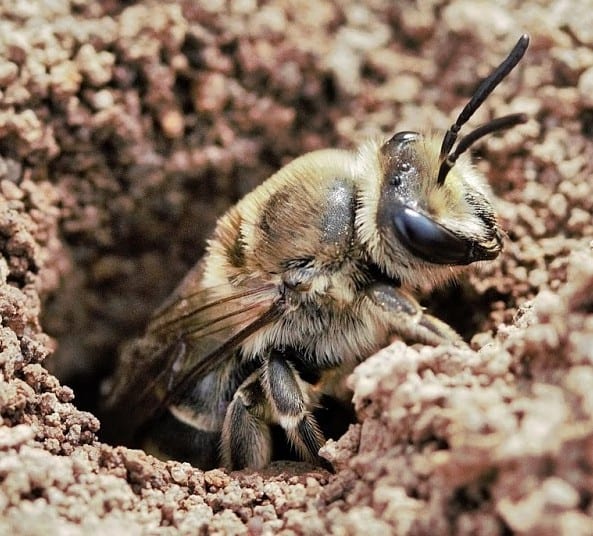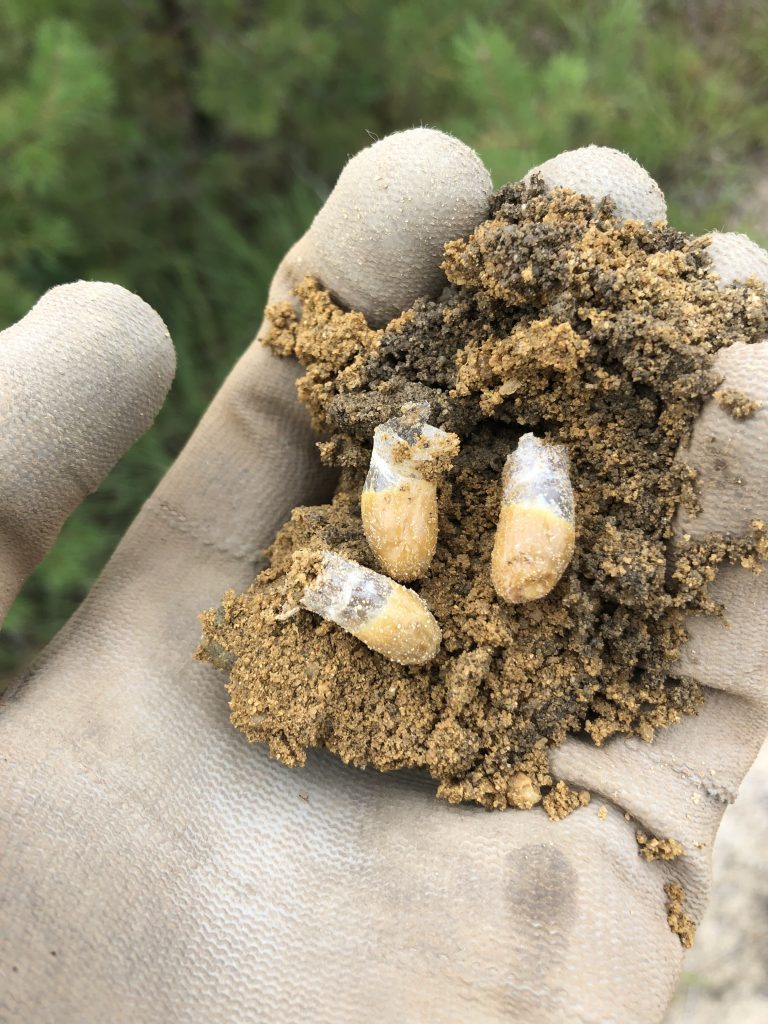Polyester Bee
The term “Polyester bee” is the name for a family of bees representing over 100 species native to North America. Polyester bees are solitary bees that nest in large aggregations over sizable areas of land. Females dig nests about 4-6 inches in the ground, then lay their eggs inside them. To protect the nest and the eggs, the females secrete and line their broods with a waterproof cellophane/polyester-material—this is where they get the name Polyester bees! This polyester-material is a natural plastic that allows Polyester bees to nest in very wet areas (“Cellophane Bee”).


Mason Bee
Named for their behavior of constructing mud walls to separate brood cells, Mason bees represent a family of bees with over 150 North American species. The Blue Orchard bee is the most common Mason bee native to the Adirondacks, and they are especially active in the early spring. Similar to Polyester bees, Mason bees are solitary, but they don’t nest in the ground—instead, they nest in the natural cavities of dead trees or hollow stems (“Mason Bees;” “Mason Bee Life”). Interestingly, Mason bees are some of the most efficient pollinators: 250 Blue Orchard bees can pollinate an acre of land as effectively as 40,000 Honey bees (“Mason Bees”)!

Bumblebee
Just about 50 different species of Bumblebees are native to North America. Compared to Polyester and Mason bees, Bumblebees are unique because they are a social species. As such, one female, known as the queen, lays the eggs for a whole colony. The colony, which is only active for one season, consists of 50-200 worker bees that take care of the hive and collect pollen to feed developing larvae (“Bumble Bees”). Bumblebees are known to be rather aggressive, especially when their hive is in danger—and without a barbed stinger, each Bumblebee is able to sting multiple times without dying (“Bumblebees: Out”).

While these are just a few native bee species, this overview provides a representative sample of bees native to the Adirondack region. Solitary bees (including ground and natural cavity dwellers) and social bees are the most basic categorization of bees because they involve drastic behavioral differences. Since the Adirondacks have native bees from all three of these categories, the region is clearly capable of supporting a vast array of different bee and pollinator species. To get a good understanding of what species the Adirondacks can and cannot support, more research needs to be conducted.
Works Cited
“Mason Bee Life Cycle.” Crown Bees, https://crownbees.com/mason-bee-life-cycle/.
Morse, Michaela. “Polyester bee.” Tufts Self-Serve Blogs and Websites, 2 March 2021, https://sites.tufts.edu/pollinators/tag/polyester-bee/.
Stanley, Timothy J. “Bumble Bees.” Native Beeology, https://nativebeeology.com/mind-your-bees-and-gardens-2/bumblebee/.
—. “Cellophane Bee / Polyester Bee.” Native Beeology, https://nativebeeology.com/mind-your-bees-and-gardens-2/polyester-bee/.
—. “Mason Bees.” Native Beeology, https://nativebeeology.com/mind-your-bees-and-gardens-2/carpenter-bee/.
Woodcock, Jackie. “Bumblebees: Out of the Shadows.” The Adirondack Almanack –, 29 May 2020, https://www.adirondackalmanack.com/2020/05/bumblebees-out-of-the-shadows.html.
—. “Sharing ‘the buzz’ about native bees.” The Adirondack Almanack –, 30 June 2020, https://www.adirondackalmanack.com/2020/06/sharing-the-buzz-about-native-bees.html.